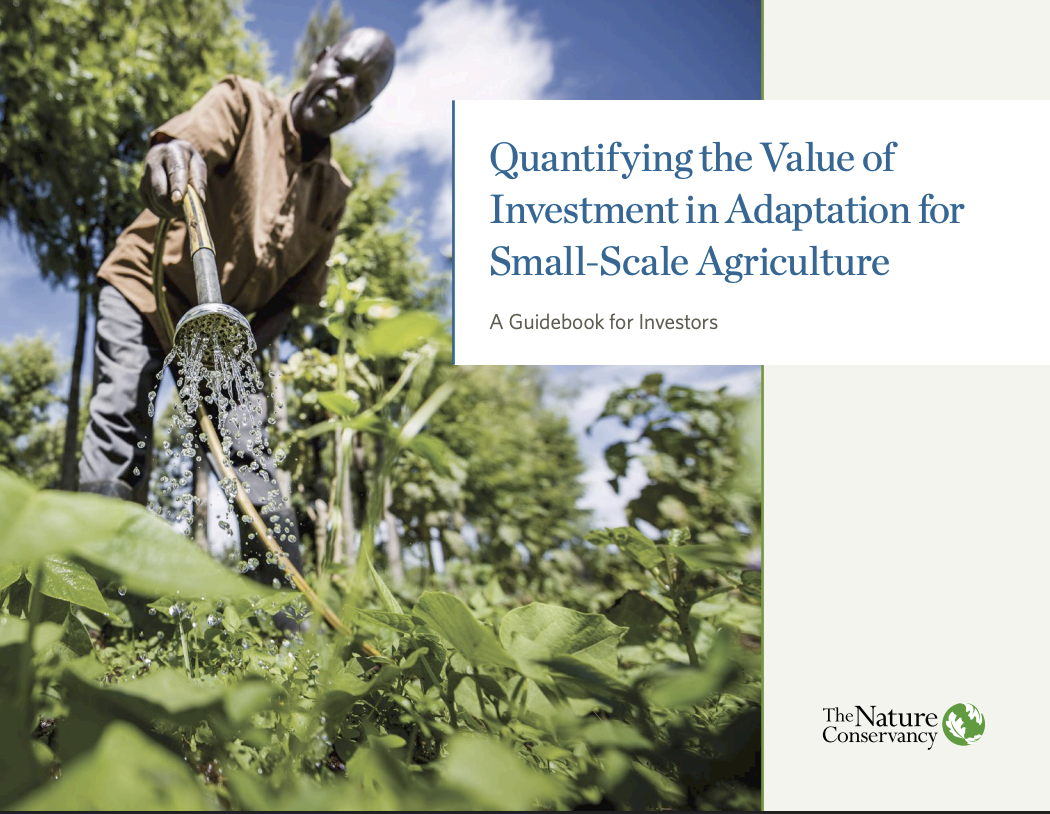Quantifying the Value of Investment in Adaptation for Small-Scale Agriculture
A Guidebook for Investors

As global temperatures rise and weather patterns shift, extreme droughts and floods pose significant material risks for agricultural production and the many Small-Scale Producers (SSPs) who steward food systems, especially in places like Sub-Saharan Africa and South Asia. Agricultural adaptation investments are efforts to modify farming practices and infrastructure to better cope with these changing conditions. When properly implemented, adaptation solutions can yield significant benefits, including risk reduction, greater productivity and increased or stabilized income.
Despite the potential impact and financial benefits of adaptation investments, they are severely underfunded, particularly by the private sector.
The Nature Conservancy (TNC) developed Quantifying the Value of Investment in Adaptation for Small-Scale Agriculture: A Guidebook for Investors to help the private sector identify, evaluate and integrate adaptation strategies that support Small-Scale Producers (SSPs) into portfolios. TNC authors Jacob Davis, senior director, Financial Advisory, NatureVest, and Kari Vigerstol, director of water security science & innovation, developed this guidebook. It is based on extensive interviews with “direct investors”—including fund managers, lending institutions and corporations—to address the main challenges they encounter when investing in agriculture adaptation.
The comprehensive investor guidebook offers a conceptual framework for assessing climate risks and measuring ROI of adaptation strategies, highlights concrete examples of adaptation strategies and provides guidance on how to integrate adaptation strategies that support SSPs into investment portfolios.
| Step 1 | Step 2 | Step 3 | |
|---|---|---|---|
| Challenge | Investors seek more accessible climate change forecasts to better assess investment risks, as traditional risk measures based on historical trends are becoming less relevant due to evolving climate patterns. | Investors need a better understanding of specific adaptation strategies and a methodology to assess their relevance, applicability, and costs and benefits. | Investors are unsure how to integrate adaptation strategies into their portfolios, including which strategies to consider, their applicability in the investment process and real-world examples for a track record. |
| Solution | The guidebook offers a conceptual approach for measuring ROI of adaptation strategies using climate risk tools, focusing on three metrics: probability of climate disruption, estimated disruption cost and expected change in business performance. | The guidebook provides concrete examples of adaptation strategies, a framework for assessing financial and non-financial costs and benefits in local contexts, and guidance on bundling strategies. | Steps 1 and 2 provide inputs for assessing climate risks, measuring ROI, identifying relevant strategies, and assessing costs and benefits. Step 3 shows how to integrate these inputs. |
Download
Quantifying the Value of Investment in Adaptation for Small-Scale Agriculture: A Guidebook for Investors
Download


